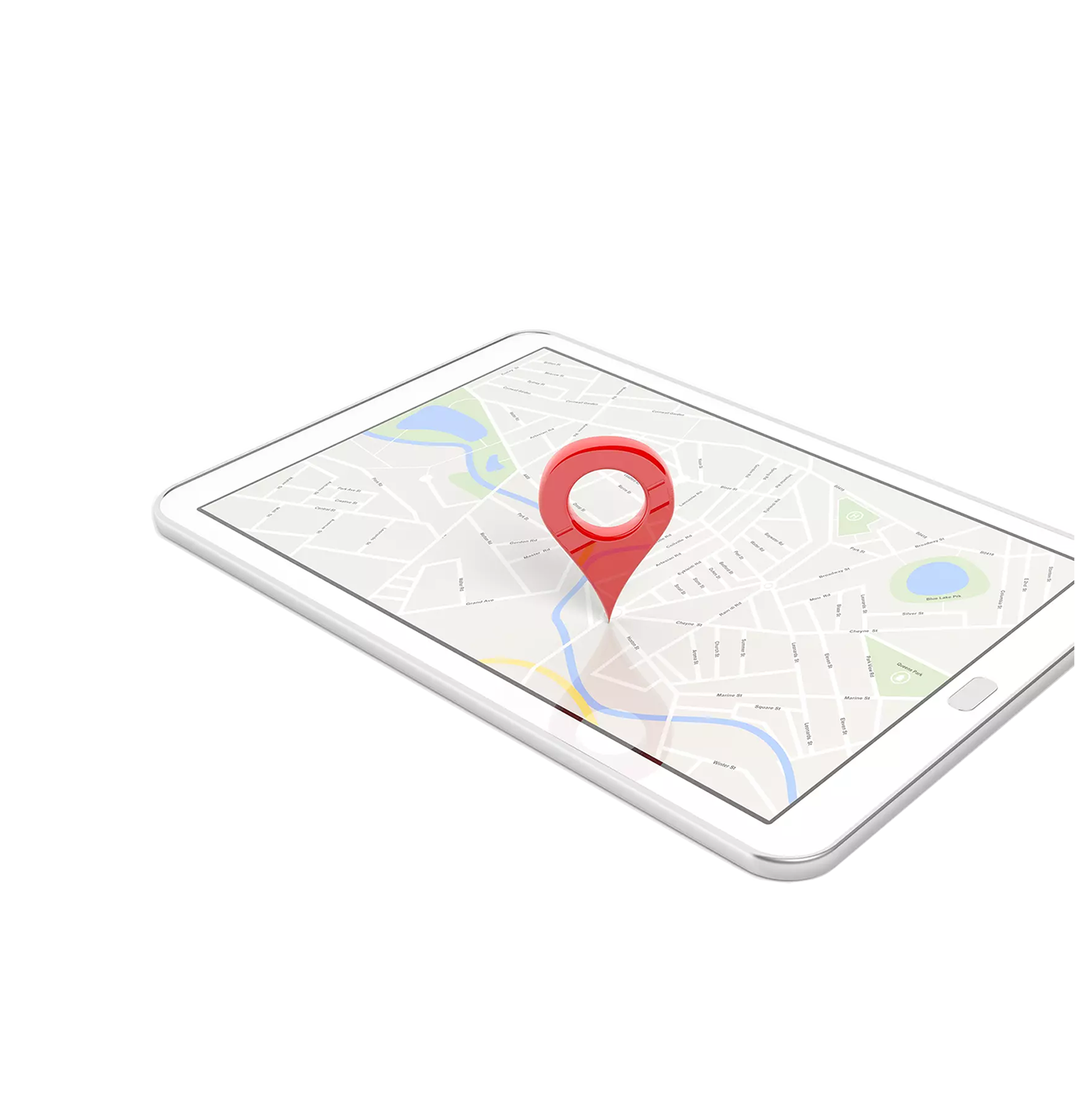TMS Implementation Done Right: Your Step-By-Step Survival Guide
TMS Implementation Done Right: Your Step-By-Step Survival Guide
TMS Implementation Done Right: Your Step-By-Step Survival Guide
Jun 12, 2025
 Aptean Staff Writer
Aptean Staff Writer Want the Gist Before You Dive In?
Follow these steps to ensure a smooth and successful TMS implementation:
Set clear goals and build your team: Define SMART objectives and bring together a cross-functional group to lead the project.
Configure and integrate systems: Tailor the TMS to your workflows and connect it seamlessly with ERP, WMS and carrier platforms.
Manage change and align stakeholders: Communicate the vision, address resistance and secure buy-in across the business.
Train users for adoption: Deliver targeted training so staff feel confident and capable using the new system.
Support the go-live phase: Provide extra resources and guidance to quickly resolve issues and stabilize operations.
Optimize continuously: Review performance regularly and refine processes to unlock ongoing value.

So, you've decided to invest in a transportation management system (TMS). Smart move. But before you pop the champagne, let’s get real for a second—installing a TMS isn’t like setting up your office’s latest coffee machine. You don’t just plug it in, hit “brew” and get that much needed cup of joe.
Many companies trip up because they don’t fully anticipate the various factors that go into a TMS system implementation, from technical requirements and workflow adjustments to change management and training. You’re not just changing software—you’re improving how your business operates from the loading dock to the executive suite.
That doesn’t mean it should be an overwhelming or complicated process. But it does mean that you need to do some due diligence in the preparation stage to avoid being blindsided by unexpected bumps—technical hiccups, change resistance and the classic case of "we didn’t think it would affect that team."
With the right game plan, you can dodge those issues and ensure a streamlined TMS rollout, reaping the benefits and return on investment (ROI) as quickly and as painlessly as possible.
If you’re ready to set yourself up for success, you’re in the right place. This TMS implementation guide walks you through every stage of the process—no sugarcoating, no generic advice. Just pitfalls to look out for and real-world strategies for making the rollout smooth, strategic and worth every penny. Let’s dig in.
Step 1: Defining Goals and Building Your A-Team
Let’s call this the “measure twice, cut once” phase.
Before you engage with any software vendors, it's crucial to have a clear vision of success. Are you striving to reduce freight spend, enhance on-time, in-full (OTIF) delivery performance, or achieve better supply chain visibility? Name it. Then frame it.
Don’t settle for vague statements like “streamline shipping” or “improve logistics.” Be specific. Set measurable goals—ones you can look back on and say, “Yep, we nailed it,” or “OK, here’s what we need to tweak.”
How do you define effective goals? Start with your pain points—what’s costing you time, money, or customer trust? Then, make those goals SMART: specific, measurable, achievable, relevant and time-bound. Prioritize what matters most to your business impact. And crucially, involve stakeholders from each relevant team early—creating an invested project team from the get-go. Logistics may want automation, finance might care more about cost control and customer service needs visibility—balancing those needs now avoids major headaches later.
Here are some examples of strong, specific implementation goals:
Reduce freight costs by 10% within 12 months by consolidating shipments, reducing overpayments and optimizing carrier selection.
Improve on-time delivery rates from 88% to 95% across all outbound lanes.
Gain real-time visibility into 100% of in-transit shipments.
Cut man-hours required for invoicing and payment auditing by 40% per month.
When setting goals, some common pitfalls to look out for are:
Setting goals you can’t measure like “streamline shipping”.
Excluding departments that are impacted downstream from your project team and planning sessions.
Assigning tasks to roles instead of individuals e.g., “Ops team” vs. “Jill from Ops”.
The survival tip? Host a kickoff workshop to get everyone on the same page about goals, timelines and key performance indicators (KPIs). Overcommunicate, especially in these early phases, to build a shared understanding. Next, build your dream team. Implementing a transport management system affects logistics, operations, finance, customer service and more so you need to build a cross-functional team to make sure everyone’s needs and concerns are represented.
Step 2: System Configuration and Integration
Now things start getting technical—but it doesn’t need to get complicated.
Your IT resource and vendor will be collaborating to configure the system to fit your workflows and integrate it with your tech stack. That’ll include carrier and data providers, your enterprise resource planning (ERP) system, warehouse management system (WMS), customer relationship management (CRM) and even electronic data interchange (EDI) platforms.
While on paper this stage looks like an almighty task and has a reputation for unexpected hurdles, it can be smooth sailing with the right planning, communication and a ruthless focus on what really matters.
Some common roadblocks are:
Customizations get out of hand, bloating your timeline.
Legacy systems won’t play nice with APIs and data formats.
Missing or inconsistent data causes downstream failures—bad data in, means bad data out.
Our top tip? It’s tempting to recreate every legacy process, every spreadsheet hack, every approval step—especially if you’re getting pressure to “make it work like the old system.” But here’s the truth: replicating the past can block progress. Your old processes were built around old limitations. Now’s your chance to streamline. Instead of creating a ton of customizations and workarounds to recreate your existing process, lean on your vendor to advise on best practice procedures.
Keep this stage of your TMS implementation smooth by:
Starting integration planning early: Ask your vendor if they have pre-built connectors or templates for your existing platforms.
Cleaning your data before it hits the new system: Make sure addresses, carrier profiles, SKUs and other data points are accurate and standardized.
Testing real-world scenarios: Don’t just test that the TMS works—make sure it works for you. Run multi-stop orders, returns, restricted delivery windows, intermodal loads, and confirm the system handles them cleanly.
Document as you go: Capture configuration decisions, integration logic and naming conventions. It’ll save you hours later when onboarding new team members or troubleshooting issues post-launch.
Step 3: Change Management and Stakeholder Alignment
The hardest part of implementing a transportation management system often isn’t the tech—it’s getting your people on board.
You could roll out the most powerful, feature-rich TMS on the market, but if your team doesn’t buy in, it won’t deliver. People resist change, especially when they don’t understand the “why” behind it, fear disruption to their job or feel excluded from the process. So get ahead of all of those challenges.
Where we see change efforts often break down:
The benefits of a TMS are not clearly communicated in advance of implementation.
Stakeholders and users don’t feel like their concerns have been taken into account.
There’s not appropriate training for end users—more on that in the next section.
There’s no one championing the change.
Here’s how you can fix that:
Start talking about the change early: Share what’s coming, why it matters and how it will help not just the company but your individual teams.
Involve users in the process: Bring in frontline users from the get-go, ask for their input and let them share their expertise to help shape and test the system.
Recruit internal champions: Identify well-respected employees in each department and involve them directly. Their support will carry a lot of weight.
Create a feedback loop: Set up simple ways for users to ask questions, raise concerns and suggest improvements before frustrations become blockers.
Celebrate early wins and contributors: Recognize teams or individuals who go above and beyond during the implementation and highlight small successes to build momentum.
Step 4: Training and User Adoption
Your TMS is built, configured and (mostly) bug-free. Now what? You’ve got to train your team members.
Too often, training is rushed—limited to a single walkthrough or basic manual—leading to confusion, resistance or errors after launch. To drive adoption and quicker benefit realization, training must be clear, role-specific and focused on building user confidence from day one. Otherwise, users avoid the system—or worse, misuse it—because they’re not comfortable with the new processes, harming your ROI and impacting productivity.
A couple of common challenges to avoid:
Generic, one-size-fits-all training sessions that leave users confused or disengaged.
Only training one or two users—putting too much pressure on them to train others on a system they don’t yet know well.
What works better:
Tailored training: Break training into bite-sized, role-specific paths that are tailored to your processes.
Empower your super users: While you should train a broad range of users, identifying a few stakeholders to become internal go-to resources is important. Just be sure they get the initial vendor support they need in order to guide your teams long after go-live.
Provide training in multiple formats: Not everyone learns the same way. Combine live sessions, short how-to videos and searchable knowledge bases. Your vendor may be able to provide a lot of this material, so be sure to ask them about it.
Adoption doesn’t happen overnight—but good training creates confident users and confident users use the system.
Step 5: Go-Live and Immediate Support
The big day is here. The system’s live and you’re watching the dashboards with bated breath.
Go-live is a major milestone, but it’s also one of the most vulnerable moments in any implementation journey. Even with thorough planning and training, unexpected issues can arise, and user questions can leave you stumped. That’s why having a structured go-live support plan is critical, so you’re not on your own at this critical stage.
Typical challenges during go-live:
Confusion over where to go for help.
Delays in resolving urgent issues, resulting in operational and service disruption.
Loss of momentum and frustration from users when things feel chaotic.
What a strong go-live support strategy includes:
A dedicated hypercare period: Agree on a set period of hands-on, rapid-response vendor support after launch with dedicated personnel who know the system and your business.
An issue triage process: Establish a clear process for logging, tracking and resolving issues quickly.
Defined vendor contact protocols: Ensure your team knows exactly how to reach your vendor, what support channels are available and the escalation procedures for urgent cases.
The goal here is simple: keep the wheels turning while you iron out the post-launch wrinkles. With the right support structure in place, go-live becomes a controlled transition—not a crisis.
Step 6: Optimization and Continuous Improvement
Go-live isn’t the finish line—it’s the starting point for long-term value.
Successful TMS implementation isn’t just about getting the software live—it’s about ensuring the software continues to drive performance. Your business will evolve and so will your logistics strategy. If you want to keep delivering results, your TMS needs to evolve with you.
Where companies lose momentum:
Neglecting the system after launch meaning it becomes outdated and underperforms.
Underutilizing features that could drive more value.
Failing to track performance against original goals, making it difficult to identify where further improvements can be made.
Stay on track by:
Scheduling regular vendor check-ins: Catch up with your vendor team to assess system performance, raise concerns and explore new capabilities.
Reviewing your KPIs: Are you hitting the benchmarks you set before implementation—cost savings, load efficiency, on-time delivery?
Staying current with updates: Keep your system current with the latest vendor updates to ensure security, performance and access to new features. Actively learn and adopt these enhancements to maximize value.
Gathering user feedback: Use surveys, interviews or informal check-ins to identify areas for improvement.
TMS optimization is an ongoing initiative. You’ve invested in the system—make sure to keep investing in its potential.
Set Your TMS Implementation Up for Success With the Right Partner
When implemented correctly, an advanced TMS can become the backbone of smarter, more agile supply chain operations for your business. But success doesn’t just come from flipping the switch and hoping for the best. It takes planning, commitment and a clear understanding of everything involved throughout the process.
So, what sets thriving businesses apart?
They start with a plan—one that’s strategic, goal-driven and aligned across departments.
They get their people on board early, not just their IT teams.
They manage change actively, instead of reacting after the fact.
They invest in training that sticks, not just check-the-box tutorials.
And they treat go-live as a starting point, not a finish line.
Following that plan, you’ll secure a successful TMS rollout that sees you quickly reducing transportation costs, improving customer service and automating cumbersome processes.
The easiest way to achieve those steps is with an expert partner by your side. That’s where Aptean comes in.
We bring deep experience in transportation and distribution, with customers using our suite of logistics products in a variety of industries across the world. And we’re constantly evolving our solutions—from cloud deployments and new features to Aptean Intelligence capabilities that leverage the latest tech—you can be sure our TMS will scale with your operation.
But most importantly, our expert team stays with you every step of the way—offering real-world insights, proactive support and solutions that deliver measurable results. Because when your logistics strategy is backed by an experienced partner and a solid technical foundation, there’s no limit to how far it can take you.
If you're looking to do TMS implementation right, contact us today and see what it looks like to have a TMS that works with your business, not against it.
Haven’t made up your mind? Take a look at our software in action with our hub of transportation management solution demos here.
Unlock the Value of Your Logistics Operation With Aptean TMS Solutions
Book a demo at a time that suits you and discover how you can run a leaner logistics operation—with fewer surprises and more control.



